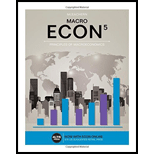QUESTION 16 Figure 6-30 Panel (а) Tprice D Panel (c) Tprice X quantity D quantity Panel (b) Tprice quantity Refer to Figure 6-30. In which market will the majority of the tax burden fall on buyers? • the market shown in panel (a). • the market shown in panel (b). the market shown in panel (c). All of the above are correct. QUESTION 17 A country has a comparative advantage in a product if the world price is lower than that country's domestic price without trade. equal to that country's domestic price without trade. not subject to manipulation by organizations that govern international trade. higher than that country's domestic price without trade. QUESTION 18 The demand for salt is inelastic, and the supply of salt is elastic. The demand for caviar is elastic, and the supply of caviar is inelastic. Suppose that a tax of $1 per pound is levied on the sellers of salt, and a tax of $1 per pound is levied on the buyers of caviar. We would expect that most of the burden of these taxes will fall on buyers of salt and the sellers of caviar. sellers of salt and the buyers of caviar. buyers of salt and the buyers of caviar. sellers of salt and the sellers of caviar.
QUESTION 16 Figure 6-30 Panel (а) Tprice D Panel (c) Tprice X quantity D quantity Panel (b) Tprice quantity Refer to Figure 6-30. In which market will the majority of the tax burden fall on buyers? • the market shown in panel (a). • the market shown in panel (b). the market shown in panel (c). All of the above are correct. QUESTION 17 A country has a comparative advantage in a product if the world price is lower than that country's domestic price without trade. equal to that country's domestic price without trade. not subject to manipulation by organizations that govern international trade. higher than that country's domestic price without trade. QUESTION 18 The demand for salt is inelastic, and the supply of salt is elastic. The demand for caviar is elastic, and the supply of caviar is inelastic. Suppose that a tax of $1 per pound is levied on the sellers of salt, and a tax of $1 per pound is levied on the buyers of caviar. We would expect that most of the burden of these taxes will fall on buyers of salt and the sellers of caviar. sellers of salt and the buyers of caviar. buyers of salt and the buyers of caviar. sellers of salt and the sellers of caviar.
Managerial Economics: Applications, Strategies and Tactics (MindTap Course List)
14th Edition
ISBN:9781305506381
Author:James R. McGuigan, R. Charles Moyer, Frederick H.deB. Harris
Publisher:James R. McGuigan, R. Charles Moyer, Frederick H.deB. Harris
Chapter3: Demand Analysis
Section: Chapter Questions
Problem 11E: Federal excise taxes on gasoline vary widely across the developed world. The United States has the...
Related questions
Question
Solve all questions compulsory don't use chat GPT..... Pls don't AI content added pls in this answer..... Please provide steps by step answer with proper explanation with final answer..... I will 2nd time upload this question not proper way this answer........

Transcribed Image Text:QUESTION 16
Figure 6-30
Panel (а)
Tprice
D
Panel (c)
Tprice
X
quantity
D
quantity
Panel (b)
Tprice
quantity
Refer to Figure 6-30. In which market will the majority of the tax burden fall on buyers?
• the market shown in panel (a).
• the market shown in panel (b).
the market shown in panel (c).
All of the above are correct.

Transcribed Image Text:QUESTION 17
A country has a comparative advantage in a product if the world price is
lower than that country's domestic price without trade.
equal to that country's domestic price without trade.
not subject to manipulation by organizations that govern international trade.
higher than that country's domestic price without trade.
QUESTION 18
The demand for salt is inelastic, and the supply of salt is elastic. The demand for caviar is elastic, and the supply of caviar is inelastic. Suppose that a tax of $1 per pound
is levied on the sellers of salt, and a tax of $1 per pound is levied on the buyers of caviar. We would expect that most of the burden of these taxes will fall on
buyers of salt and the sellers of caviar.
sellers of salt and the buyers of caviar.
buyers of salt and the buyers of caviar.
sellers of salt and the sellers of caviar.
Expert Solution
This question has been solved!
Explore an expertly crafted, step-by-step solution for a thorough understanding of key concepts.
Step by step
Solved in 2 steps with 1 images

Recommended textbooks for you

Managerial Economics: Applications, Strategies an…
Economics
ISBN:
9781305506381
Author:
James R. McGuigan, R. Charles Moyer, Frederick H.deB. Harris
Publisher:
Cengage Learning

Economics Today and Tomorrow, Student Edition
Economics
ISBN:
9780078747663
Author:
McGraw-Hill
Publisher:
Glencoe/McGraw-Hill School Pub Co

Principles of Economics 2e
Economics
ISBN:
9781947172364
Author:
Steven A. Greenlaw; David Shapiro
Publisher:
OpenStax

Managerial Economics: Applications, Strategies an…
Economics
ISBN:
9781305506381
Author:
James R. McGuigan, R. Charles Moyer, Frederick H.deB. Harris
Publisher:
Cengage Learning

Economics Today and Tomorrow, Student Edition
Economics
ISBN:
9780078747663
Author:
McGraw-Hill
Publisher:
Glencoe/McGraw-Hill School Pub Co

Principles of Economics 2e
Economics
ISBN:
9781947172364
Author:
Steven A. Greenlaw; David Shapiro
Publisher:
OpenStax


Principles of Economics (MindTap Course List)
Economics
ISBN:
9781305585126
Author:
N. Gregory Mankiw
Publisher:
Cengage Learning

Principles of Microeconomics (MindTap Course List)
Economics
ISBN:
9781305971493
Author:
N. Gregory Mankiw
Publisher:
Cengage Learning